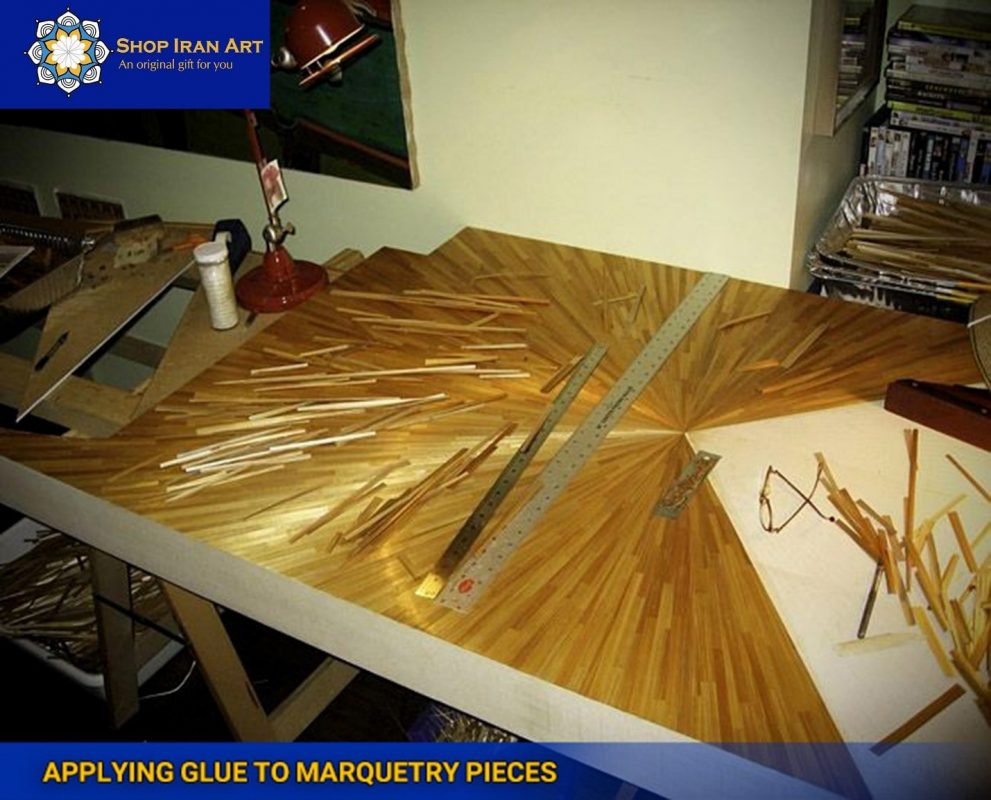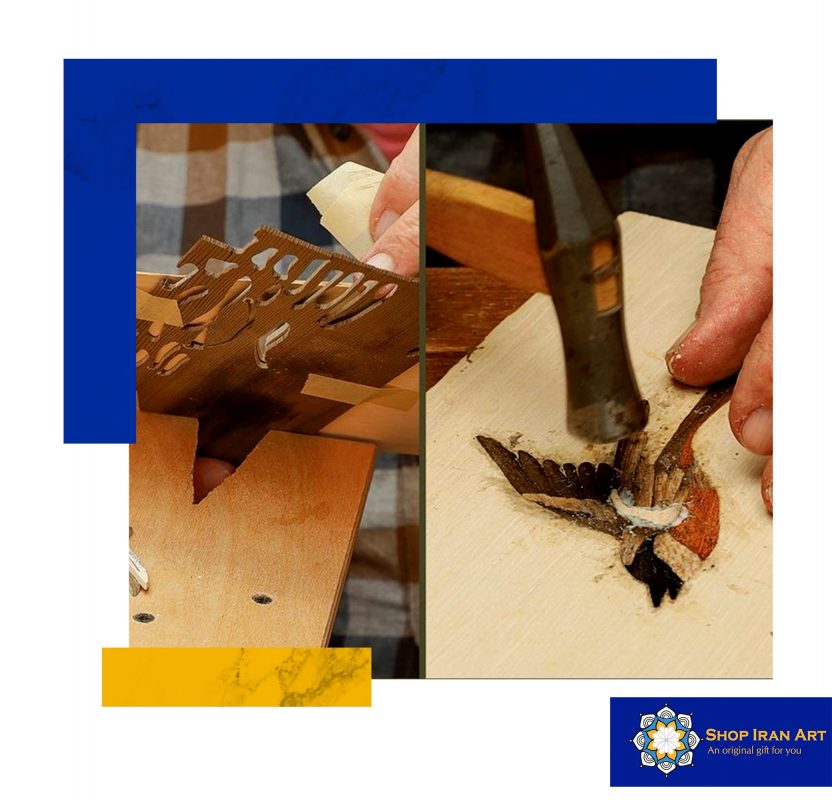Sin categorizar
How To Glue Marquetry
how to glue marquetry
Marquetry is a centuries-old art form that still fascinates enthusiasts with its intricate designs and superb craftsmanship. One of the critical elements in creating an elaborate inlay work is mastering the art of glueing. The proper glueing is essential to ensure the artwork’s longevity and stability and seamlessly integrate the veneer pieces. In this article, we dive into the world of inlays and explore techniques and considerations when glueing inlays.

Introduction to Marquetry and Gluing Techniques
Bonding techniques are essential in the field of marquetry. A successful inlay project depends on the selection and placement of the veneer and the correct adhesive application. Glue is the invisible force that holds masks together, giving the final assembly strength, stability and durability. A well-executed glueing process ensures that the artwork will stand the test of time and captivate viewers for future generations.
Glueing serves as the bridge between individual veneer pieces, transforming them into a cohesive whole.
Exploring the vast landscape of marquetry glueing begins with a journey into the realm of adhesives. Different types of glue find their application in marquetry, each with unique properties and characteristics. Traditional options include hide glue, renowned for its reversibility and authenticity, and modern alternatives like PVA glue, celebrated for its ease of use and reliability.
Before embarking on the glueing process, the marquetry pieces must be meticulously prepared. This involves selecting the finest veneers, considering colour, grain patterns, and texture. The surfaces are then skillfully cut, ensuring precision and accuracy to achieve a seamless fit.
Preparing the Marquetry Pieces for Gluing
Before starting the fascinating process of glueing parquet parts, careful preparation of the veneer is essential to ensure excellent results.The journey begins with selecting wood veneers, which demands an artist’s discerning eye. The selection process involves considering the overall design and ensuring a harmonious blend of hues and grain directions to enhance the final artwork.
Attention to detail is paramount as the veneers are skillfully shaped using various tools, such as fret saws or scroll saws, depending on the intricacy of the design.As the cutting progresses, A delicate dance occurs between the woodworker and the veneer.
The goal is to achieve a precise, clean cut while maintaining design integrity while managing complex curves and corners. The veneer is carefully formed, so patience and a steady hand are essential so that each piece contributes to the overall composition.
Selecting the Right Glue for Marquetry
One traditional glue option widely favoured by marquetry artisans is hidden glue. Its reversible nature allows for disassembly and repair, making it an ideal choice for restoration work. However, it requires careful temperature control during application and may not be as convenient to work with as modern alternatives.
Polyvinyl acetate glue, often called woodworking or white glue, is popular among contemporary marquetry enthusiasts. PVA glue is readily available, easy to use, and offers a strong bond. It has a relatively quick drying time, allowing for efficient work progress.
When selecting the suitable glue for your marquetry project, it’s essential to consider factors such as your level of expertise, your design’s specific requirements, and the artwork’s desired longevity. Experimentation and testing are encouraged to find the glue that best suits your preferences and artistic goals. This hands-on approach allows you to understand better how each bond behaves and assists in refining your technique.

Applying Glue to Marquetry Pieces
The art of marquetry truly comes to life when the time comes to apply glue to the carefully prepared veneer pieces. By understanding the nuances of using adhesive to marquetry, you can ensure seamless integration of the veneers and achieve a visually stunning result.
Depending on the type of glue chosen—such as hide glue, PVA glue, or epoxy—follow the manufacturer’s instructions regarding application techniques and drying times.
The goal of applying glue to marquetry pieces is to achieve an even distribution without excessive amounts. One standard method involves using a fine brush, ideally with natural bristles, allowing precise control and coverage. Dip the brush into the glue, ensuring it is evenly saturated, and apply a thin, uniform layer to the surface of the veneer piece.

Glue-Up and Clamping Techniques for Marquetry
Assembling and glueing the marquetry pieces is pivotal in creating stunning artwork. By understanding the intricacies involved in this stage of the marquetry process, you can ensure a secure and flawless bond between the veneers.
Once the glue has been applied to the marquetry pieces, it is essential to work efficiently to avoid premature drying. Carefully position each veneer piece, aligning them precisely according to the design.
When using clamps, it is crucial to distribute the pressure evenly. Placing small pieces of wood, known as cauls, between the clamps and the marquetry surface can help achieve uniform pressure and prevent any marks or indentations. The cauls act as buffers, ensuring the clamping force is applied uniformly, resulting in a solid bond between the veneers.
For larger inlay compositions or inlay compositions with complex contours, vacuum pressing is an excellent alternative to traditional clamping methods. These devices use suction to apply even pressure across the surface to achieve a secure bond without multiple clamps. Vacuum presses can be custom-made or purchased based on your specific needs.
For further resources and supplies related to marquetry, you can visit the Shop Iran Art website for a wide range of quality products.
Conclusion
The art of marquetry is a captivating journey that blends creativity, precision, and craftsmanship. The glueing process is a crucial bridge, bringing together meticulously prepared veneer pieces to form a cohesive and visually striking composition. By selecting suitable glue, preparing the marquetry pieces with care, and employing effective glueing techniques, we can ensure the longevity and beauty of our marquetry artwork.
We have delved into the meticulous process of preparing the marquetry pieces, from selecting the finest veneers to shaping and refining them to perfection.
What are the common types of glue used in marquetry?
Common types of glue used in marquetry include hide glue, PVA glue (woodworking glue), and epoxy glue.
Is hide glue reversible?
Yes, hide glue is reversible, which means it can be disassembled and repaired, making it suitable for restoration work.
What is the benefit of using PVA glue in marquetry?
PVA glue, also known as woodworking or white glue, is easy to use, offers a strong bond, and has a relatively quick drying time, making it convenient for marquetry projects.




